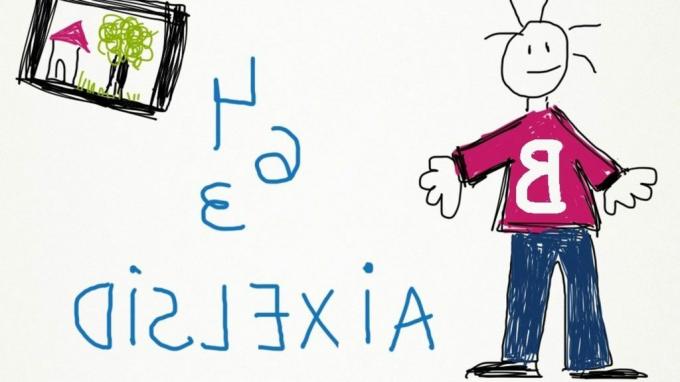
When children start to write their first words, it is one of the most special moments for parents. It is a process that transfers autonomy and knowledge to the child, which is more than special.
Vygotsky, a Belarusian psychologist who carried out several researches in the field of learning development and the preponderant role of social relationships in this process, reports that writing has meaning for children, so that it acts as a kind of necessary and relevant task for the life.
see more
Adhesion to the “National Commitment to Literate Children” ends on the 31st
Programa Criança Alfabetizada will promote assessment systems for…
However, in some cases, surprises can arise. Children can start writing mirrored letters or numbers, that is, writing the inverted letters, as if the person were looking into a mirror.
The act described above of writing letters backwards is known as mirror writing. Fortunately, this is a normal phenomenon, since the child is in the process of building writing.
This is because the ability to write is after language acquisition and after a specific level of human motor maturity. It is necessary that children experience writing, make attempts, tests and make mistakes, in order to learn the ideal.
Some characteristics are essential to achieve full learning, so they are improved in early childhood education. Laterality (right left), concepts of spatial notion, symmetry, body notion, fine motor coordination, coordination visomotor skills, relaxing and contracting the body, muscle tone, among others, are essential aspects to be worked on in education childish.
Before systematizing writing “on paper”, several other activities involving the body must be well developed, since everything that is felt through our body becomes more significant. In this regard, here are some activities for intervention aimed at balance and motor orientation.
With a tape on the arm or leg, indicating the right (or left) side, something is placed on the floor to delimit the space, such as 3 mats for example.
With the child positioned on the middle mattress, the instructor gives commands such as: right (he/she must move to the corresponding mattress), left or middle.
When these skills are mastered, 3 mats can be placed in front of the child, so that another child can participate in the activity, demonstrating that when they position themselves in front of each other, the act of jumping to the right of one will be different from the act of jumping to the right otherwise.
With two children playing, one takes on the role of the robot while the other is the guide. With the help of the instructor, the two combine robot movement signals/commands. For example, if the guide touches the left side of the robot's head, the robot turns to the left; if it touches the right side, it turns right; if it touches the top of the head, the robot ducks, and so on. After a while, the roles of guide and robot among the children are reversed.
To start in an easier way, the activities are done alone, according to the teacher's command, who says to show the hand straight, put your left foot on the side of the chair, put your left hand on your left eye, resting your right elbow on your right knee, etc. After that, each one must face a colleague and must follow the instructions given by the teacher, but locating in the other.
With chalk, draw letter or word lines, so that the students walk over them, following the order in which the line must be drawn.
When wetting their fingers in the water, students should run their fingers over the strokes of the words written on the blackboard.
The idea is to keep the balloon in the air so that you hit it with just your right hand, then just your left hand.
The teacher/instructor must write a letter with his finger on the child's back, so that he can find out what it is.
In a sandy area, write with your finger or a popsicle stick.
In more severe cases, children tend to mirror not just a few words but entire sentences, which may indicate dysgraphia. In addition to this, dyslexia, Irlen syndrome, problems in motor coordination such as dyspraxia, are the major learning disorders that cause mirrored writing.
Know these disorders:

Also known as "ugly handwriting" occurs due to an inability to remember the spelling of the letter. It is divided into two types: motor dysgraphia (dyscalligraphy) and perceptual dysgraphia. Fortunately, it is not associated with any kind of intellectual impairment.
Children who have this type of disorder usually have slow writing, illegible handwriting, disorganized writing, general disorganization on the page because they do not have spatial orientation, retouched letters, poorly made, atrophied stems, omission of letters, words, numbers, distorted shapes, movements contrary to writing (an S instead of the 5 by example).

It usually manifests itself during the literacy phase, its main characteristics being a low performance in the ability to read and write.

It's a neurological dysfunction that prevents the brain from performing movements correctly. This causes problems in motor coordination (slowness, imprecision, difficulties when cutting), lack of three-dimensional perception (copying geometric figures, writing) and balance.
It is important to remember that before the age of 10, there is not enough maturity to classify children as having any of these disorders.
If the child, a little older, presents worrying behavior, it is recommended to request an evaluation with a psychopedagogue and other professionals, since the diagnosis of these disorders is always multidisciplinary.
In cases of left-handed children, it is worth remembering that they have more difficulty writing than right-handed ones, since in the culture In the western world, the movement to write is from right to left, which obliges left-handers to make the opposite movement from their hand to the left. written.
See too: Phases of Literacy


